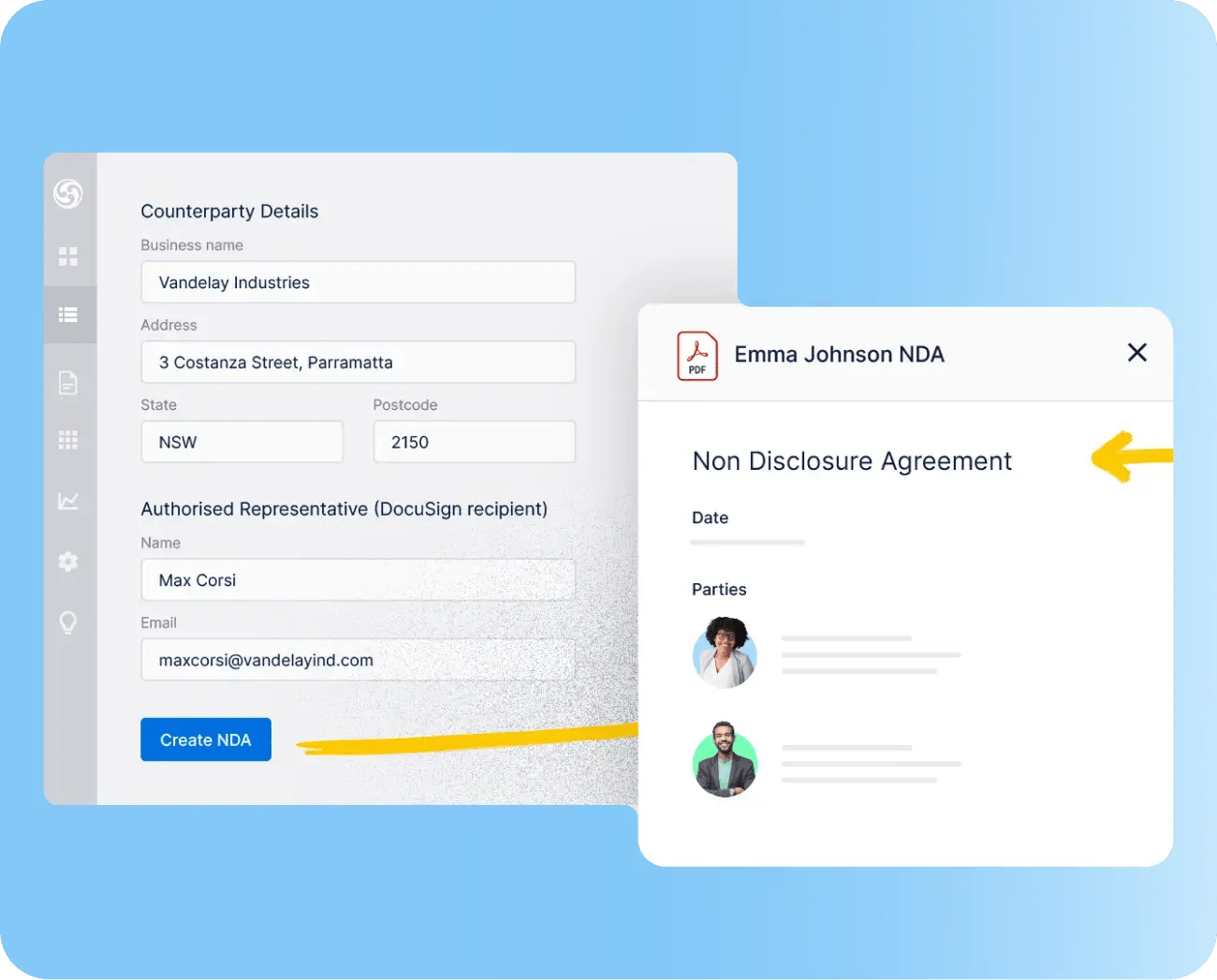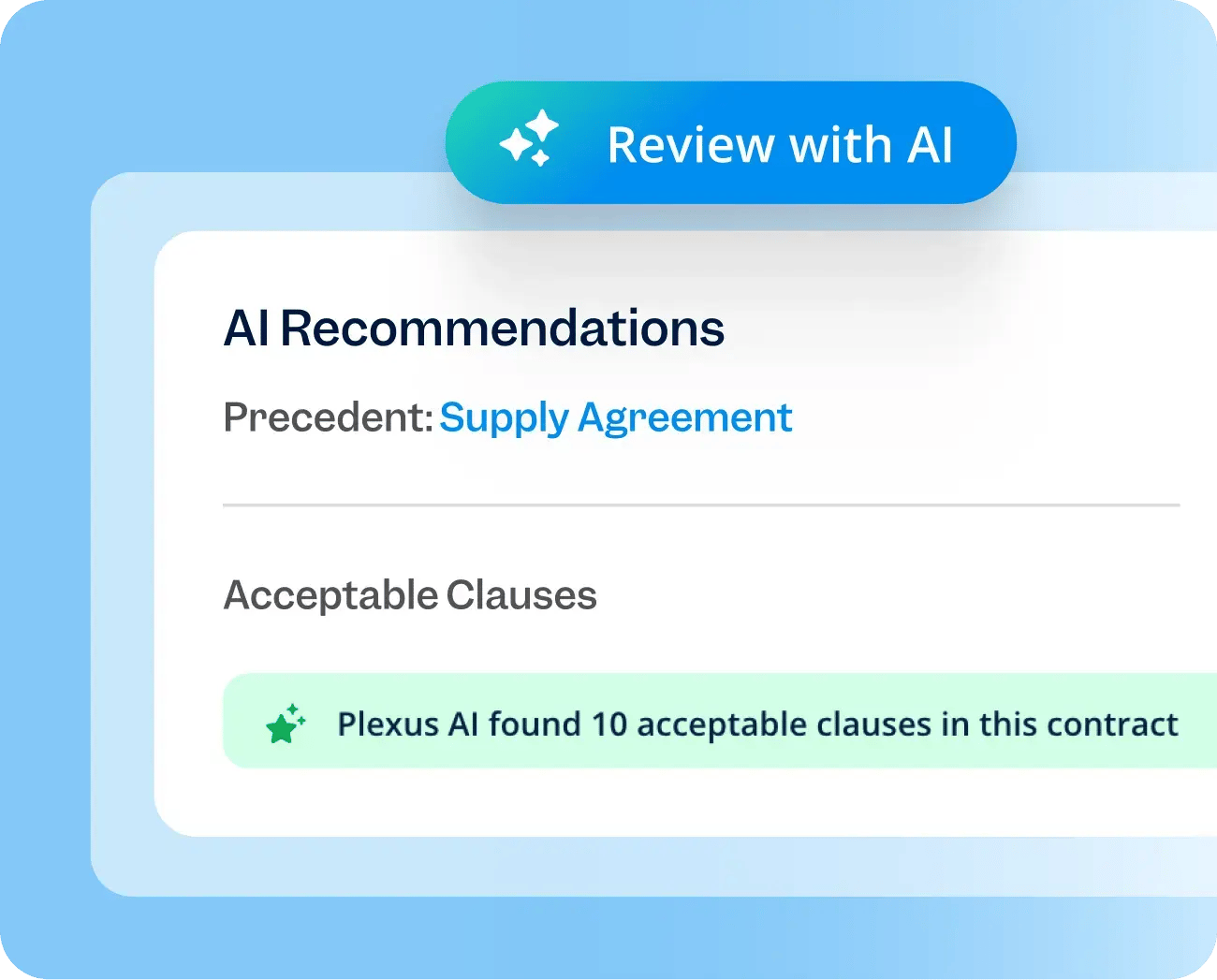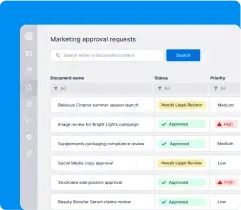Double your team’s impact. Zero extra lawyers.
Automate routine contracts and requests, scale self-serve compliance, and free your lawyers for real lawyering.

/Colour/Woolies.png?width=193&height=60&name=Woolies.png)
/Colour/Ricoh.png?width=193&height=60&name=Ricoh.png)
/Colour/CPA.png?width=193&height=60&name=CPA.png)
/Colour/Engie.png?width=193&height=60&name=Engie.png)
What’s holding you back?
73% of in-house lawyers report being buried in routine tasks.
90% of business legal needs go unmet due to bandwidth constraints.
Matter intake is chaotic and routine compliance is slowing down the rest of the business.
How GCs and legal leaders use Plexus

Streamlined contracts
Sales, procurement, and HR self-serve from pre-approved templates while AI flags risks and suggests playbook-aligned alternatives, so legal only steps in when it matters

Smarter matter management
Every request logged, triaged, and tracked in one workspace. Prioritise critical issues and reallocate resources where they add the most value.

Compliance that supports faster launches
Instant, AI-powered content compliance so campaigns launch faster and legal only steps in when it matters. Fully-compliant promotions can be supported by Plexus' 24-hour legal turnaround.
.png?width=800&height=800&name=Untitled%20design%20(44).png)
AI that scales your capacity
Plexus learns your policies and playbooks. It explains clauses in plain English, drafts responses, and applies precedents so your team doesn’t waste time on repetitive work.

Streamlined contracts
Sales, procurement, and HR self-serve from pre-approved templates while AI flags risks and suggests playbook-aligned alternatives, so legal only steps in when it matters

Smarter matter management
Every request logged, triaged, and tracked in one workspace. Prioritise critical issues and reallocate resources where they add the most value.

Compliance that supports faster launches
Instant, AI-powered content compliance so campaigns launch faster and legal only steps in when it matters. Fully-compliant promotions can be supported by Plexus' 24-hour legal turnaround.
.png?width=800&height=800&name=Untitled%20design%20(44).png)
AI that scales your capacity
Plexus learns your policies and playbooks. It explains clauses in plain English, drafts responses, and applies precedents so your team doesn’t waste time on repetitive work.
Why top legal teams choose Plexus
Scale smarter
Increase productivity by 65% and manage more work without adding new headcount.
Reduce reliance on external counsel
Keep standard matters in-house with AI and workflows.
Mitigate risk proactively
Automated checks ensure fewer compliance surprises.
Protect your team
Free lawyers from repetitive work to reduce burnout and improve retention.
Earn business trust
Deliver faster, more responsive service that positions legal as a partner, not a bottleneck.
Real results where it matters most
Plexus team is supporting you all the way

Fast start
Fast start
Contracts, matters, and compliance workflows live in days, not months.

Human lawyer expertise on-demand
Human lawyer expertise on-demand
24-hour, lawyer-reviewed promotions and campaigns when needed.

End-to-end onboarding
End-to-end onboarding
We handle the setup so your team can focus on adoption and impact.







.png?width=1000&height=563&name=thumbnail%20(1).png)


%20(1)%201.png?width=272&height=129&name=iStock-1976222113%20(1)%20(1)%201.png)

/Black/Woolies.png?width=225&height=69&name=Woolies.png)
/Black/Rea%20Group.png?width=225&height=69&name=Rea%20Group.png)
/Black/Nestle.png?width=225&height=69&name=Nestle.png)
/Black/ACC.png?width=225&height=69&name=ACC.png)
/Black/Sigma%20Healthcare.png?width=225&height=69&name=Sigma%20Healthcare.png)
/Black/Cocacola.png?width=225&height=69&name=Cocacola.png)
.png?width=488&height=388&name=Justin%20Coss%20-%20Noumi%20(2).png)
